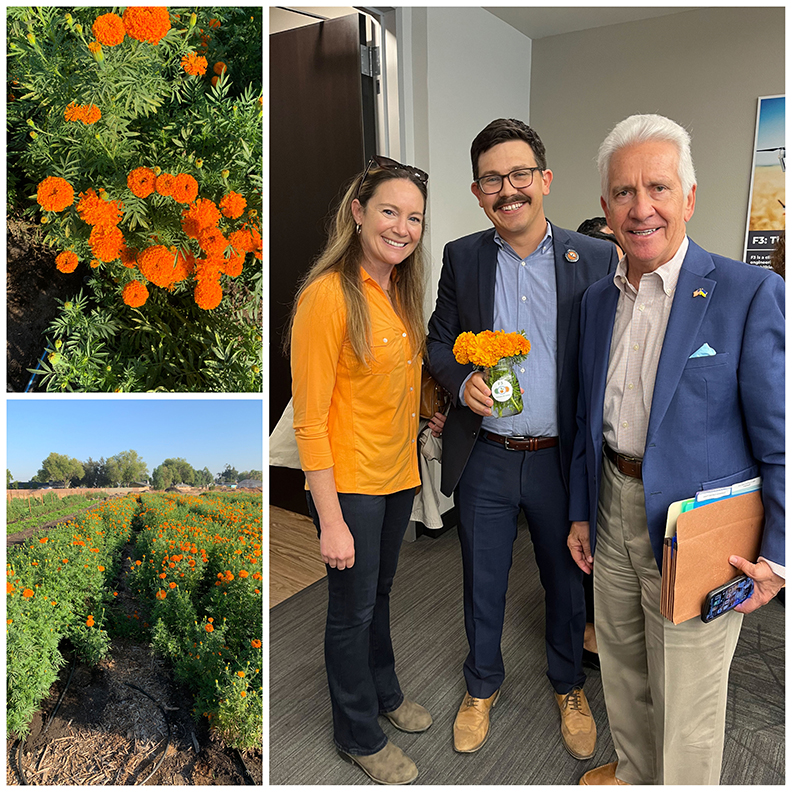
When CDFA Undersecretary Christine Birdsong recently toured Yo’Ville Community Garden and Farm in Fresno, a resident-led community garden that also serves as an incubator farm, a large plot brimmed with marigold flowers being grown by historically underserved farmers.
Marigolds (cempasúchil in Spanish) feature in traditional Día de los Muertos (Day of the Dead) celebrations, which begin today and continue through November 2.
The occasion features decorated altars resplendent with offerings ranging from photographs of the dead to candles, keepsakes, favorite foods and drinks, and yes, marigolds.
Marigolds also hold spiritual significance in Hinduism for many of our farmers and food processing workers in places like Bakersfield, Patterson and throughout the valley, and the flowers were utilized in recent traditional Diwali observations.
“It was wonderful to see the cultural connections at Yo’Ville Community Garden, with agriculture tied to these significant holidays,” said Undersecretary Birdsong. “Our farmers and workers have personal connections to these occasions, and you can see the importance of growing these flowers for our local communities in the Central Valley.”
The Yo’Ville Farm Incubator Program recently received a grant from CDFA’s Beginning Farmer and Farmworker Training and Workforce Development Grant Program, and programs like Yo’Ville are firmly in mind with the ongoing development of the Fresno-Merced Future of Food Innovation Initiative (F3),
The Central Valley received $30 million for F3 in the 2021-2022 California State Budget, money that will be utilized to establish a Climate-Smart Agrifood Technology and Engineering Cluster while also serving the area’s approximately 4,500 historically underserved farmers, in addition to assisting workers with training to help meet agriculture’s future in technology.
And if that also means more marigolds, well, so much the better — along with the seemingly endless variety of culturally important foods, flowers, herbs, plants and other agricultural commodities that are planted and harvested in our state every day.


